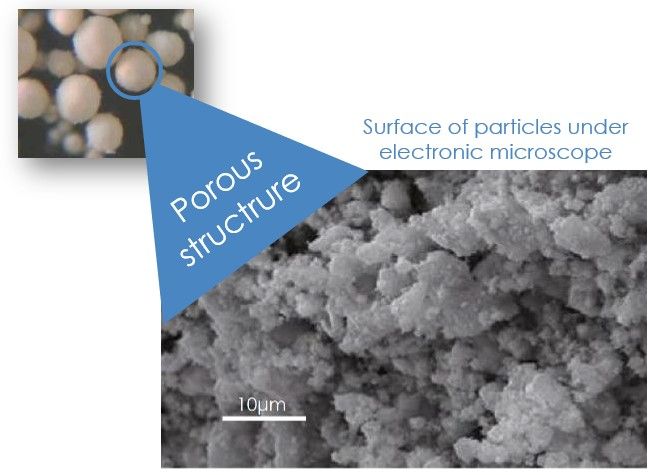Copper sulphate and zinc oxide are two pig feed additives that are well known for their effect on growth performance and reducing E. coli scours. However, the European Commission has reviewed their use in recent years in order to address their impact on the environment and on antimicrobial resistance. In 2019, regulation reduced the levels of copper included in piglet feeds and, from June 2022, zinc oxide will no longer be allowed on veterinary prescription.
However, copper and zinc are essential nutrients for the animal and are important for gut health. In order to maintain animal health and performance at these lower inclusion levels, a potentiated form of zinc oxide and a new source of copper are now available.
CoRouge® - a new source of copper
From August 2019 the level of copper permitted in piglet feeds was reduced. In pre-starter and starter diets, fed up to maximum 4 weeks post weaning, the inclusion per tonne was lowered from the previous 170 g to the current 150 g. Any follow-on feeds fed beyond 4 weeks post-weaning and up to a maximum of 8 weeks post-weaning must now include only 100 g/tonne copper.
Trials indicated that these changes would likely reduce performance by between 2% and 10%. This potential loss in performance has generally been offset by reformulations, perhaps by the inclusion of other feed additives or by replacing copper sulphate with more functional copper sources such as CoRouge®. Nevertheless, it is inevitable that many herds are performing less efficiently as a consequence of the change in regulations.
Copper oxide has similar properties to zinc oxide
Copper sulphate (containing 25% Cu) is the standard source of copper used in most feeds - but since 2016 a new form of copper has been authorised in the EU. CoRouge® is a highly concentrated (75% Cu) red copper(I) oxide, as bioavailable as the sulphate form but with superior antibacterial activity; it has been shown to improves gut health and performance.
In an experiment at Wageningen University (NL) involving 600 piglets, copper sulphate and CoRouge® were tested at 3 dose levels. The diets provided either 15 ppm, 80 ppm or 160 ppm copper and were fed for five weeks from weaning. Improved growth performance from CoRouge® was explained by a modification of the gut microflora, including on the intestinal E.coli population.

HiZox® - a potentiated form of zinc oxide
Another challenge comes in June 2022 with the withdrawal of zinc oxide as a veterinary medicinal product. However, it should be clarified that zinc oxide will still be a permitted feed additive, used as a source of zinc up to 150 g/tonne.
Only zinc oxide works
Different zinc compounds, like sulphate and chelated sources, have been widely tested against veterinary prescribed zinc oxide but without convincing results. Coated forms of zinc oxide have also failed to achieve the same results. The theory behind encapsulation is that the coating protects zinc oxide from stomach acids and so the molecule is active in the small intestine. But zinc oxide needs to act in the stomach first, where it can suppress the growth of E.coli so preventing proliferation further down the intestinal tract which can then lead to scouring.
HiZox® is a form of zinc oxide with a high bioavailability. Its unique physicochemical properties and very large surface area means that it interacts with the microflora both in the stomach and the small intestine.

HiZox®, even supplied at low dosages, can improve intestinal health through reduction of pathogenic bacteria and improvement of gut integrity, as recently shown by Ghent University in Belgium (J. Anim. Physiol. Anim. Nutr., 2018 ;1-11).

Conclusions
The benefits of zinc oxide and copper supplementation in pig feeds are well known. Removing the medicinal use of zinc oxide may be a challenge for diarrhoea control and reducing copper levels potentially reduces feed efficiency and growth rates. However HiZox® and CoRouge® represent the best zinc and copper combination for digestive security and growth performance. It is widely recognised that there is not one single alternative to replace prescription zinc oxide but HiZox® and CoRouge® should be considered as part of the solution.


